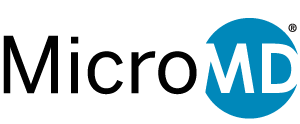Roughly 77 percent of all prescriptions were delivered electronically in 2018 (Becker Hospital Review)
E-Prescribing of Controlled Substances, or EPCS, was approved by the US Drug Enforcement Administration (DEA) in 2010 in response to the rising drug crisis in our nation. By enacting these regulations, the DEA gave practitioners the option of transmitting prescriptions for Schedule II-V drugs electronically, a move that not only fights the abuse of these drugs but provides a number of other benefits to both physicians and patients as well.
The Benefits of E-Prescribing of Controlled Substances
The first benefit of EPCS is improved patient safety. As a physician, this is always your number one priority. This improvement begins at the point when the physician is actually prescribing the drug with clinical alerts that guard against interactions and allergies, improper dosing, and patient conditions such as pregnancy and breast-feeding. Because physicians can view a patient’s medication history as they are prescribing, they can avoid over-prescribing and because of the ease of e-prescribing, physicians can send smaller quantities avoiding extra pills in a patient’s medicine cabinet, a risk factor for abuse by that patient or a member of their family. Finally, e-prescribing lessens the occurrence of errors that happen when prescriptions are ordered by hand such as difficult to read handwriting, confusing abbreviations, or unclear dosing instructions.
Workflow Efficiency
Another benefit is increased workflow efficiency for the provider. Handwriting a prescription takes a lot of time and often requires additional provider attention in the event of a pharmacist needing to clarify a prescription. Because providers are often already electronically prescribing other drugs, it’s much more convenient to include controlled substances in that same workflow, eliminating an additional step.
Improved Security
Also beneficial is the increase in security. When prescriptions are e-prescribed the information for that prescription is sent directly and securely to the pharmacy. This eliminates the opportunity for a patient to alter quantities or number of refills or view a physician’s DEA number, protecting the physician from fraud. Providers can rest assured that e-prescriptions for controlled substances are received at the pharmacy exactly as they were written.
Patient Cost Saving Opportunities
Another benefit is the opportunity to find cost savings for patients. Providers can see whether a patient’s insurance plan will cover a certain medication while they are prescribing it. In the event that an insurance plan will not cover a certain medication, alternatives are often displayed as well as information about patient responsibility for the medication, reducing patient frustration and stress.
Doctor Shopping & Drug Abuse Prevention
Electronic prescribing of controlled substance solutions also reduces doctor shopping. Because e-prescribing technology often includes a medication history module, physicians are able to see their patients’ medication history and catch signs of abuse. Moving forward, this technology is also expected to include an interstate Prescription Drug Monitoring Program, allowing physicians to see even more information about their patients’ prescription drug use to make doctor shopping even more impossible.
Controlled Substance Prescription Insights
Another benefit of EPCS is that it facilitates prescriber pattern analysis, meaning that physicians can see how controlled substances are being prescribed overall. This increases understanding of how certain medications are being used and could possibly lead to breakthroughs in treatment.
Improved Patient Satisfaction
EPCS increases patient satisfaction by streamlining the prescription process overall. Patients are provided with the most cost-effective drug that is also appropriate to treat their condition due to the availability of clinical decision support and drug cost information. In addition to this, there is the efficiency of shorter wait times at pharmacies as by the time the patient arrives to pick up their prescription it’s already been received, reviewed, and fulfilled.
Interoperability
Finally, EPCS makes impressive strides toward achieving full interoperability as it’s a relatively easy venue in which to exchange health information such as medication history and includes quickly expanding Prescription Drug Monitoring Programs.
So why the slow adoption?
Given the benefits associated with this solutions, it’s shocking that as of September 2016 only 20% of prescribers utilized EPCS and less than 4% of all electronic prescriptions were for controlled substances. Why aren’t physicians using this amazing technology? To put it simply, physicians have yet to understand how beneficial the technology is when compared to the work needed to adopt and implement the technology. Education that highlights the benefits and protections associated with electronic prescribing of controlled substances can make all the difference in expanding its adoption.
While many clinicians have hesitations to adopting this technology, the reality is that there are only benefits to be gained by implementing EPCS. Are you ready to take the plunge? MicroMD can help. Visit our website at micromd.com/marketplace/clinical/micromd-epcs-gold/ or call us at 1-800-624-8832 for more information on how to get started.
Looking for a specialty EMR?
MicroMD EMR/EHR is flexible and can fit almost any specialty. Let us help you get back to the business of healing.








